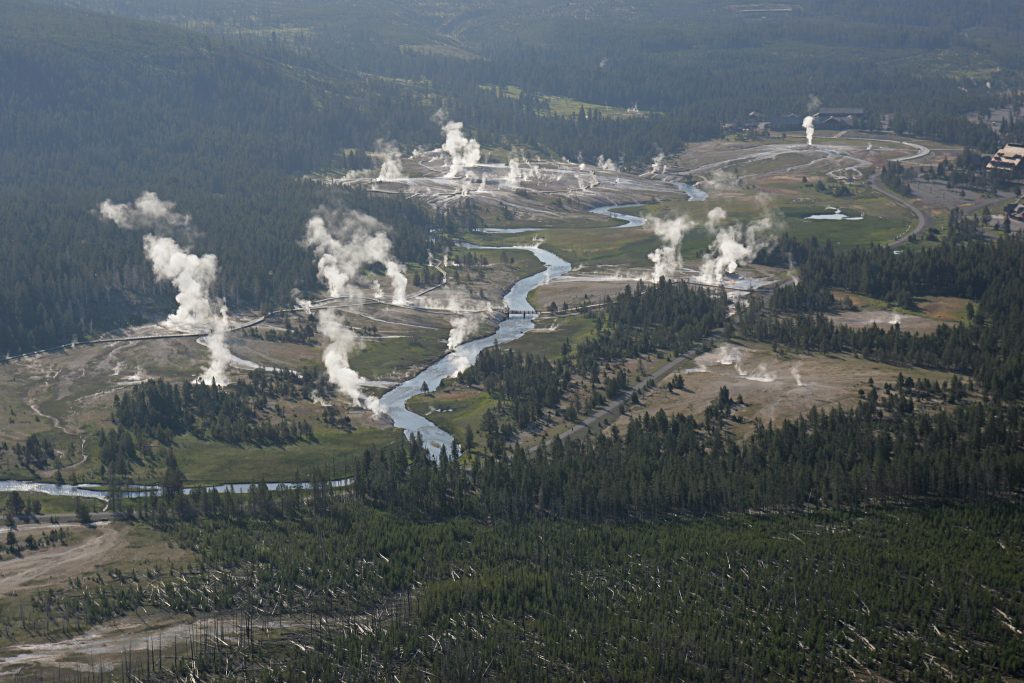Welcome to Facts Vibes! Explore the wonders of Yellowstone National Park with our comprehensive compilation of 100 fascinating facts. From its geothermal features to diverse wildlife, delve into the park’s rich history and natural beauty. Get ready to be amazed by Yellowstone’s unparalleled magnificence.
Exploring the Wonders of Yellowstone National Park: 100 Fascinating Facts
Exploring the Wonders of Yellowstone National Park: 100 Fascinating Facts
1. Yellowstone was established as the world’s first national park in 1872.
2. The park spans across three states: Wyoming, Montana, and Idaho.
3. It is home to more than 10,000 hydrothermal features, including geysers, hot springs, and mud pots.
4. The iconic Old Faithful geyser can shoot water up to 185 feet in the air.
5. Yellowstone is situated on top of a supervolcano that last erupted over 640,000 years ago.
6. The park is a haven for wildlife, hosting populations of grizzly bears, wolves, elk, and bison.
7. Grand Prismatic Spring is the largest hot spring in the United States, known for its vibrant colors.
8. Yellowstone’s diverse ecosystem includes forests, rivers, canyons, and alpine meadows.
9. The park’s famous Lamar Valley provides excellent opportunities for wildlife spotting.
10. Visitors can enjoy a range of outdoor activities, from hiking and camping to fishing and wildlife photography.
These fascinating facts only scratch the surface of the remarkable attractions waiting to be discovered at Yellowstone National Park. Whether you’re a nature enthusiast, a wildlife lover, or simply seeking adventure, this iconic destination promises a truly memorable experience.
Most popular facts
Yellowstone National Park was established in 1872, making it the first national park in the world.
Yellowstone National Park was established in 1872, making it the first national park in the world.
The park spans across three states: Wyoming, Montana, and Idaho.
The park spans across three states: Wyoming, Montana, and Idaho.
It is home to more than 10,000 hydrothermal features, including geysers, hot springs, and mud pots.
Yellowstone National Park is home to more than 10,000 hydrothermal features, including geysers, hot springs, and mud pots.
Old Faithful, one of the park’s most famous geysers, erupts approximately every 90 minutes.
Old Faithful, one of the park’s most famous geysers, erupts approximately every 90 minutes.
Yellowstone sits on top of a supervolcano, which creates its unique geothermal features.
Yellowstone sits on top of a supervolcano, which creates its unique geothermal features.
The park is larger than the states of Rhode Island and Delaware combined.
The park is larger than the states of Rhode Island and Delaware combined.
Yellowstone is home to diverse wildlife, including grizzly bears, wolves, bison, and elk.
Yellowstone is home to diverse wildlife, including grizzly bears, wolves, bison, and elk.
The Grand Canyon of the Yellowstone showcases stunning waterfalls and colorful rock formations.
The Grand Canyon of the Yellowstone showcases stunning waterfalls and colorful rock formations.
The park contains the largest high-elevation lake in North America, Yellowstone Lake.
Yellowstone Lake is the largest high-elevation lake in North America.
Yellowstone’s petrified trees are estimated to be over 50 million years old.
Yellowstone’s petrified trees are estimated to be over 50 million years old.
The park’s thermal areas are constantly changing due to geological activity.
The park’s thermal areas are constantly changing due to geological activity.
Yellowstone’s Lamar Valley is often referred to as the “Serengeti of North America” due to its abundant wildlife.
The Lamar Valley in Yellowstone is often called the “Serengeti of North America” due to its abundant wildlife.
More than 900 species of native plants can be found within the park.
Yes, the park is home to more than 900 species of native plants.
The tallest waterfall in the park, Lower Falls, plunges nearly 308 feet into the Yellowstone River.
The tallest waterfall in the park, Lower Falls, plunges nearly 308 feet into the Yellowstone River.
Yellowstone’s geothermal features are fueled by a magma chamber located just a few miles below the Earth’s surface.
Yellowstone’s geothermal features are fueled by a magma chamber located just a few miles below the Earth’s surface.
In conclusion, Yellowstone National Park is an extraordinary natural wonder that offers a myriad of fascinating experiences for visitors. From its diverse wildlife to its stunning geothermal features, the park continues to captivate and inspire all who explore its magnificence. As one of the most cherished national parks in the world, Yellowstone’s unparalleled beauty and ecological significance serve as a reminder of the vital importance of preserving and protecting our natural heritage. Whether you are a nature enthusiast, an adventure seeker, or simply a traveler in search of awe-inspiring landscapes, Yellowstone is an iconic destination that promises to leave an indelible impression on all who venture within its boundaries.
